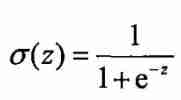当前位置:网站首页>Golang learning essay
Golang learning essay
2022-06-13 01:17:00 【A simple heart】
One .go Program relative path , Executive distinction ;
Files that depend on relative paths , A path error occurred :
go run and go build Dissimilarity , A temporary directory to execute , One can be executed manually in the compiled Directory , Paths are handled in different ways go run, Constantly generate new temporary files . because go run and go build The execution path of the compiled file is different , The level of execution may also be different , Naturally, there are various unreadable problems .
resolvent :
1. Configure public environment variable method .
2. Transfer parameter method .
Two .Go Study redis agreement
Form of agreement :
*< The number of arguments > CR LF
$< Parameters 1 Number of bytes > CR LF
< Parameters 1 The data of > CR LF
......
$< Parameters N Number of bytes > CR LF
< Parameters N The data of > CR LF
example :
*3
$3
set
$3
$cls
$3
pwd
Actual demonstration of the agreement :
"*3\r\n$3\r\nset\r\n$3\r\ncls\r\n$3\r\npwd\r\n"
The following procedure :
package main
import (
"fmt"
"log"
"net"
"os"
"github.com/redis-protoc/protocol"
)
const (
Address = "127.0.0.1:6379"
Network = "tcp"
)
func Conn(network, address string) (net.Conn, error) {
conn, err := net.Dial(network, address)
if err != nil {
return nil, err
}
return conn, nil
}
func main() {
// Read in parameter
args := os.Args[1:]
fmt.Println("args = ", args)
if len(args) <= 0 {
log.Fatalf("Os.Args <= 0")
}
// redis Parameter format of the protocol :
// *< The number of arguments > CR LF
// $< Parameters 1 Number of bytes > CR LF
// < Parameters 1 The data of > CR LF
// ...
// $< Parameters N Number of bytes > CR LF
// < Parameters N The data of > CR LF
|---------------------------|
// for example :
// *3
// $3
// SET
// $5
// mykey
// $7
// myvalue
// Get request protocol
reqCommand := protocol.GetRequest(args)
// Connect Redis The server
redisConn, err := Conn(Network, Address)
if err != nil {
log.Fatalf("Conn err: %v", err)
}
defer redisConn.Close()
// Write request content
_, err = redisConn.Write(reqCommand)
if err != nil {
log.Fatalf("Conn Write err: %v", err)
}
// Read reply
command := make([]byte, 1024)
n, err := redisConn.Read(command)
if err != nil {
log.Fatalf("Conn Read err: %v", err)
}
fmt.Println("command = ", string(command))
// Deal with replies
reply, err := protocol.GetReply(command[:n])
if err != nil {
log.Fatalf("protocol.GetReply err: %v", err)
}
// The reply content after processing
log.Printf("Reply: %v", reply)
// The original reply
log.Printf("Command: %v", string(command[:n]))
}
Send Protocol , The successful execution is as follows :
[[email protected]] # go run redis_protoc.go set name cler
args = [set name cler]
command = +OK
2021/07/25 16:22:09 Reply: OK
2021/07/25 16:22:09 Command: +OK
Command execution failed :
When command execution fails , return -1
[[email protected]] # go run redis_protoc.go get nvr
args = [get nvr]
command = $-1
2021/07/25 16:23:57 Reply: <nil>
2021/07/25 16:23:57 Command: $-1
Assembly agreement :
func GetRequest(args []string) []byte {
req := []string{
"*" + strconv.Itoa(len(args)),
}
for _, arg := range args {
req = append(req, "$"+strconv.Itoa(len(arg)))
req = append(req, arg)
}
str := strings.Join(req, "\r\n")
return []byte(str + "\r\n")
}
The first character of the status byte stream returned by the service :
const (
StatusReply = '+'
ErrorReply = '-'
IntegerReply = ':'
BulkReply = '$'
MultiBulkReply = '*'
OkReply = "OK"
PongReply = "PONG"
)
=========================
The first character returned by the byte stream indicates the meaning :
State the reply (status reply) The first byte of "+"
Error response (error reply) The first byte of "-"
Integer reply (integer reply) The first byte of ":"
Batch reply (bulk reply) The first byte of "$"
Multiple batch replies (multi bulk reply) The first byte of "*"
3、 ... and .Go Memory allocation - Escape analysis
1. Concept definition :
The so-called escape analysis , It is the method to determine the dynamic range of the pointer in the compilation stage of the program , Simply put, where the program can access the pointer , Generally speaking, the compiler decides whether to allocate variables to the heap or stack .
2. characteristic :
a. Is there anywhere else ( Nonlocality ) Cited , As long as it can be quoted , Then the variables are allocated to the heap .
b. Some variables are referenced externally even if they are not used , But it may be because the variable is too large , It will also be allocated to the heap ,y Because the stack is too small , Cannot store .
3. The background of escape analysis
a. If all variables are allocated to the heap , Because of the constant application , Free memory , It will not only affect the performance of the program ( Relative to stack ), Memory fragmentation will also occur , besides , Increased pressure on the garbage collection mechanism , As a result, the performance of the program is not high .
therefore , Need to use an on-demand distribution , On demand options , In specific cases , Only by allocating memory in the appropriate location can we make rational use of memory resources , So as to ensure the feasibility of the system & High availability .
4. Several examples of escape analysis occur :
{
-m: Will print out the optimization strategy of escape analysis , In fact, it can be used at most 4 individual -m, But the amount of information is large , One . General use 1 Just one
-l: Function inlining is disabled , Disable... Here inline Can better observe the escape situation , Reduce interference
}
programme 1- The pointer
a. External reference structure
package main
import "fmt"
type UserInfo struct {
Name string
}
func GetUserInfo() *UserInfo {
return &UserInfo{
}
}
func main() {
_ = GetUserInfo()
}
[email protected] % go build -gcflags '-m -l' yace.go
# command-line-arguments
./yace.go:8:9: &UserInfo literal escapes to heap
As shown above , Indicates the corresponding UserInfo Externally referenced , So memory is allocated to the heap . It's not hard to imagine , Although in GetUserInfo In the method , Local invariant , If allocated on the stack , When the function returns , Automatically recycled , Then it's over , therefore
Consider that the allocated memory should also be on the heap , After all, it is also externally referenced .
programme 2- Type not determined
a. Local pointers are allocated on the stack
package main
func main() {
str := new(string)
*str = "zhang"
}
[email protected] goBasicGrammer % go build -gcflags '-m -l' yace.go
# command-line-arguments
./yace.go:12:12: new(string) does not escape
As shown above ,str Although it's a pointer , In fact, variables are allocated to the stack , Not applied to external references .
If you add fmt.Println(*str), There will be changes , The following code :
package main
func main() {
str := new(string)
*str = "zhang"
fmt.Println(*str);
}
[email protected] goBasicGrammer % go build -gcflags '-m -l' yace.go
# command-line-arguments
./yace.go:14:12: new(string) does not escape
./yace.go:17:13: ... argument does not escape
./yace.go:17:14: *str escapes to heap
As shown above 17:14, here str To the heap , Why use a fmt This kind of variable allocation transfer will occur ?
reason : func Println(a …interface{}) (n int, err error) The receive parameter is a interface Type of , The program cannot determine the specific type of the variable in the editing phase , Therefore, escape analysis will occur , This allocates variables to the heap .
programme 3- Leakage parameters
a. Parameter passing pointer
package main
type UserInfo struct {
Name string
}
func GetUserInfo(u *UserInfo) *UserInfo {
return u
}
func main() {
_ = GetUserInfo(&UserInfo{
Name: "erl"})
}
[email protected] goBasicGrammer % go build -gcflags '-m -l' yace.go
# command-line-arguments
./yace.go:7:18: leaking param: u to result ~r1 level=0
./yace.go:11:18: &UserInfo literal does not escape
Above , Memory allocated to the stack , Although the call GetUserInfo, It's a pointer , You've done nothing at all? , The original pointer passed is returned directly , Equivalent to no reference , still main In the scope of , So it is allocated to the stack .
Change my , Pass through non pointer variables
package main
type UserInfo struct {
Name string
}
func GetUserInfo(u UserInfo) *UserInfo {
return &u
}
func main() {
_ = GetUserInfo(UserInfo{
Name: "erl"})
}
[email protected] goBasicGrammer % go build -gcflags '-m -l' yace.go
# command-line-arguments
./yace.go:7:18: moved to heap: u
Above , Parameter passing becomes , Variable , In fact, it is equivalent to the scheme 1 The structure is the same , Because in main Calling method GetUserInfo, Passed parameters , Method parameters produce a copy , If this parameter is assigned on the stack , So the function returns , This parameter is recycled , External references are over , At this time, escape analysis will be generated , Allocate the structure to the heap .
边栏推荐
- Leetcode-13- Roman numeral to integer (simple)
- MySQL transaction
- [latex] insert picture
- [leetcode] valid phone number Bash
- 生态聚合NFT来袭,Metaverse Ape引领Web 3.0元宇宙新范式革命
- Method of cleaning C disk
- [projet cs144 de Stanford Computing Network] lab1: Stream reassembler
- Install pycharm process
- Addition and modification of JPA
- Alexnet实现Caltech101数据集图像分类(pytorch实现)
猜你喜欢

Introduction to common activation functions

Rasa dialogue robot helpdesk (III)

Common skills for quantitative investment - drawing 3: drawing the golden section line

Rasa对话机器人之HelpDesk (三)

Work and life

pycharm add configutions

Jenkins持续集成操作

Leetcode question brushing 06 bit operation
![[leetcode] valid phone number Bash](/img/f8/cecb74f9d8f7c589e62e3a9a874f82.jpg)
[leetcode] valid phone number Bash

Plusieurs catégories de tests logiciels sont claires à première vue
随机推荐
Pipeline pipeline project construction
[Latex] 插入圖片
Self use notes for problem brushing learning
spiral matrix visit Search a 2D Matrix
MySQL transaction
How to choose stocks? Which indicator strategy is reliable? Quantitative analysis and comparison of DBCD, ROC, vroc, Cr and psy index strategy income
Traditional machine learning classification model predicts the rise and fall of stock prices under more than 40 indicators
Key point detection data preparation and model design based on u-net Network -- detection model of four key points of industrial components
Application advantages of 5g industrial gateway in coal industry
np. Understanding of axis in concatenate
np.concatenate中axis的理解
The tle4253gs is a monolithic integrated low dropout tracking regulator in a small pg-dso-8 package.
pycharm add configutions
Rasa dialogue robot helpdesk (III)
使用Pygame创建一个简单游戏界面
408 true question - division sequence
Breadth first search for node editor runtime traversal
sort
Higherhrnet pre training model -- download from network disk
Pysmb usage